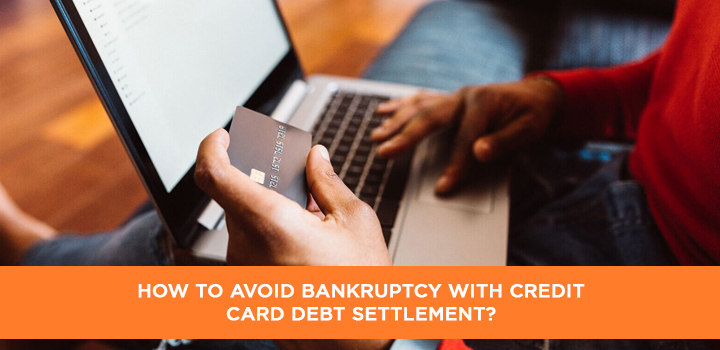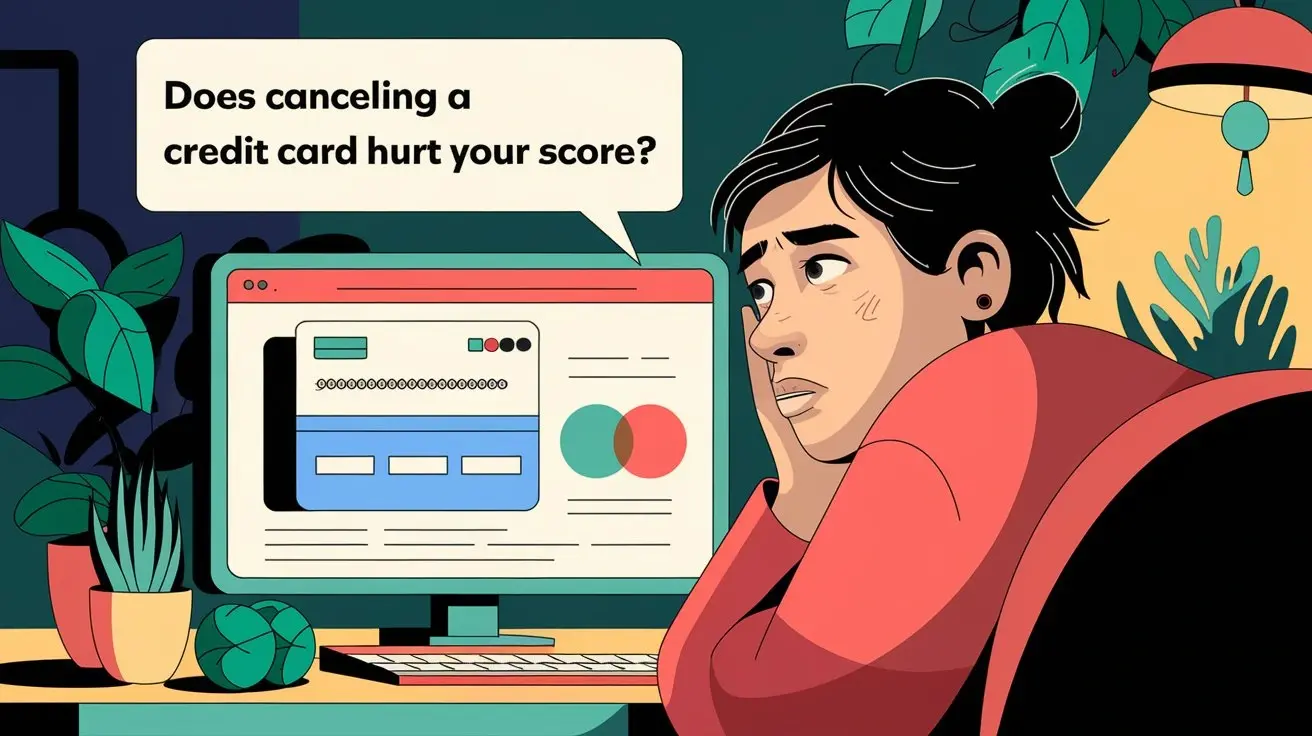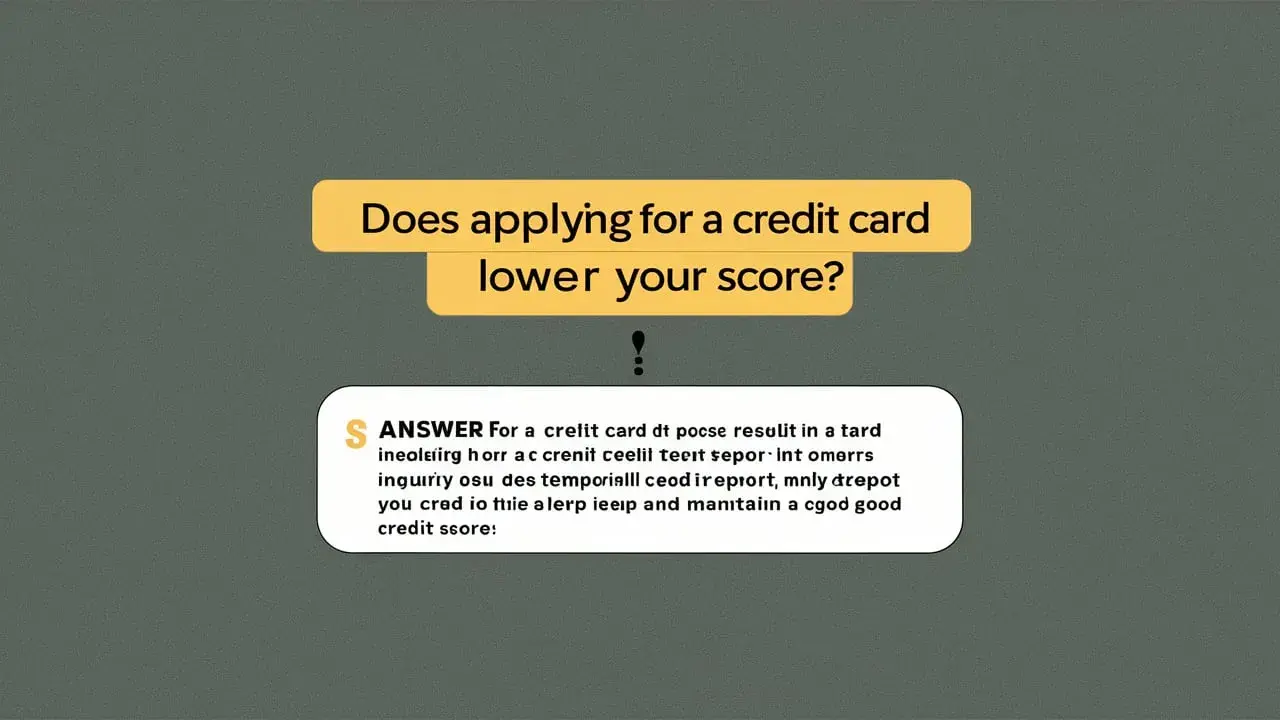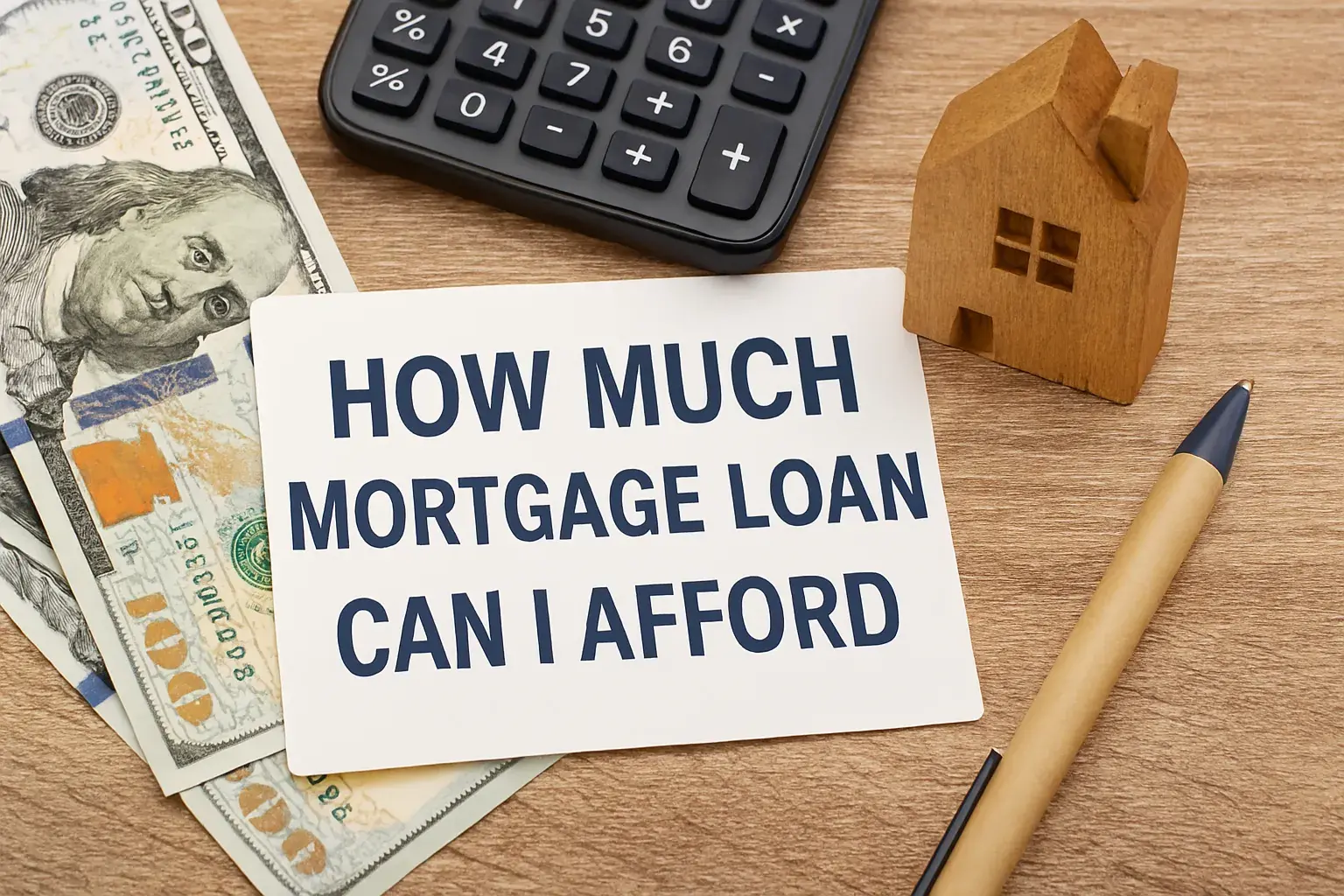-
Posted on: 24 Dec 2022

-
Facing overwhelming credit card debt can feel like a one-way ticket to bankruptcy. This guide reveals how strategic credit card debt settlement offers a viable path to avoid financial ruin, significantly reducing your principal balance and reclaiming control of your finances.
Understanding Credit Card Debt Settlement
Credit card debt settlement is a process where you negotiate with your creditors (credit card companies) to pay a reduced amount of your total outstanding debt. Instead of paying back the full balance, you aim to settle the debt for a lump sum or a series of payments that is less than what you originally owed. This is often undertaken when individuals are struggling to make minimum payments and are at risk of default or bankruptcy. The goal is to resolve significant credit card debt without the severe repercussions of filing for bankruptcy.
In 2025, the landscape of consumer debt remains challenging. According to recent projections, the average credit card debt per household continues to hover around $7,000, with many individuals carrying balances far exceeding this figure. When this debt becomes unmanageable, creditors may be willing to negotiate a settlement to avoid the lengthy and often fruitless process of pursuing legal action against a debtor who may have no assets. This mutual interest forms the basis of debt settlement.
The core principle behind debt settlement is that creditors would rather recover a portion of their money than nothing at all. If a creditor believes a debtor is on the brink of bankruptcy, their chances of recovering any funds diminish significantly. Therefore, they might agree to a settlement for, say, 50-70% of the original debt, provided the payment is made promptly or through an agreed-upon plan. This can be a lifeline for those drowning in high-interest credit card balances and facing the specter of bankruptcy.
It's crucial to understand that debt settlement is not a magic bullet. It involves a strategic approach, often facilitated by a debt settlement company, and it does come with potential drawbacks, most notably its impact on your credit score. However, when executed correctly, it can be a far less damaging alternative than Chapter 7 or Chapter 13 bankruptcy.
How It Differs from Debt Consolidation
While both debt settlement and debt consolidation aim to manage overwhelming debt, their mechanisms and outcomes are distinct. Debt consolidation typically involves taking out a new loan (like a personal loan or balance transfer credit card) to pay off multiple existing debts. The goal is to simplify payments into one monthly bill, often with a lower interest rate. The total amount owed generally remains the same or might slightly increase due to fees. You still owe the full amount you borrowed.
Debt settlement, on the other hand, focuses on reducing the principal amount you owe. You negotiate with creditors to accept less than the full balance. This means the total amount you pay back is less than your original debt. However, this reduction often comes with a negative mark on your credit report, indicating that the debt was settled for less than the full amount. Unlike consolidation, where you continue to pay off the debt in full, settlement implies a compromise on the principal owed.
When is Settlement Considered?
Debt settlement is typically considered when an individual is experiencing significant financial hardship, such as:
- Job loss or a substantial reduction in income.
- Unmanageable monthly payments due to high interest rates and fees.
- Inability to meet minimum payments for an extended period.
- Facing collection actions or lawsuits from creditors.
- Considering bankruptcy as a last resort.
If your debt is manageable with a reasonable repayment plan, debt consolidation or simply budgeting more effectively might be better options. Debt settlement is a more aggressive strategy for situations where the debt is truly insurmountable without a significant reduction in the principal.
Is Credit Card Debt Settlement Right for You?
Deciding if credit card debt settlement is the best path forward requires a thorough assessment of your financial situation, your debt profile, and your tolerance for potential consequences. It's not a one-size-fits-all solution, and its suitability hinges on several critical factors. By carefully evaluating these aspects, you can make an informed decision that steers you away from bankruptcy and towards financial recovery.
Assessing Your Financial Hardship
The primary indicator that debt settlement might be a viable option is demonstrable financial hardship. This means you are genuinely unable to afford the minimum payments on your credit card debts, even after exploring budget adjustments. For 2025, economic uncertainties and inflation continue to strain household budgets, making it harder for many to keep up with rising costs and debt obligations. If you've experienced a significant income reduction, unexpected medical expenses, or a divorce, and these events have made your debt unmanageable, debt settlement becomes a more relevant consideration.
Creditors are more likely to consider settlement if they believe you are truly struggling and might default. They see settlement as a way to recover some funds, whereas a bankruptcy filing could result in them recovering nothing, or very little, after legal fees and other priority claims. Therefore, your ability to demonstrate this hardship is key.
Your Debt-to-Income Ratio (DTI)
A high Debt-to-Income ratio is a strong indicator of financial distress. Your DTI is calculated by dividing your total monthly debt payments by your gross monthly income. For example, if your total monthly debt payments are $1,500 and your gross monthly income is $4,000, your DTI is 37.5%. Lenders often consider a DTI above 43% to be high, signaling a significant burden. If your DTI is predominantly driven by credit card debt with high interest rates, debt settlement might offer a way to reduce that burden.
Consider this scenario: Sarah has $30,000 in credit card debt with an average interest rate of 22%. Her minimum payments total $750 per month. Her income is $3,000 per month after taxes. Her DTI is 25% based on after-tax income, but if we consider gross income of $4,000, it's 18.75%. However, if her income were $2,000 after taxes, making the minimum payments $750, her DTI would be 37.5%, indicating a much more precarious situation. If her income dropped further, making the $750 payment impossible, debt settlement becomes a more appealing prospect.
Types of Debt Eligible for Settlement
Credit card debt settlement primarily targets unsecured debts. This includes:
- Credit card balances
- Medical bills
- Personal loans (unsecured)
- Payday loans
- Overdue utility bills
Secured debts, such as mortgages, auto loans, and loans secured by other collateral, are generally not eligible for traditional debt settlement. Creditors holding secured debts have a claim on the asset used as collateral, making them less likely to negotiate a principal reduction as they can repossess the asset if payments are not made. While some programs might assist with mortgage modifications, pure debt settlement typically focuses on unsecured obligations.
Comparing Settlement to Bankruptcy
The decision often boils down to choosing between debt settlement and bankruptcy. Each has distinct consequences:
Feature Credit Card Debt Settlement Bankruptcy (Chapter 7) Bankruptcy (Chapter 13) Impact on Debt Reduces principal owed, but debt is marked as "settled for less than full amount." Discharges most unsecured debts, meaning you owe nothing. Reorganizes debt into a 3-5 year repayment plan; some debt may be discharged. Credit Score Impact Significant negative impact; "settled" accounts remain on report for 7 years. Severe negative impact; remains on report for 10 years. Severe negative impact; remains on report for 7 years from discharge date. Asset Protection No direct asset protection; creditors can still sue. Can result in liquidation of non-exempt assets. Allows you to keep most assets by repaying creditors through the plan. Process Complexity Negotiation with creditors, requires discipline to save funds. Legal process, requires court filings and trustee oversight. Legal process, requires court filings and trustee oversight. Cost Settlement fees (percentage of savings), potential tax liability on forgiven debt. Court filing fees, attorney fees, potential asset liquidation. Court filing fees, attorney fees, repayment plan payments. Eligibility Requires demonstrable hardship, creditors must agree to settle. Requires passing a "means test" based on income. Requires regular income to fund repayment plan. If your primary goal is to eliminate debt and you have few assets to protect, bankruptcy might seem appealing. However, the long-term impact on your credit and the stigma associated with it can be substantial. Debt settlement, while damaging to your credit, can be a faster route to debt freedom and often results in less severe long-term credit damage than a Chapter 7 bankruptcy, provided you rebuild your credit afterward.
Your Tolerance for Credit Score Impact
Debt settlement will negatively affect your credit score. When you stop paying your accounts to save for a settlement, those accounts will likely become delinquent. Once a settlement is reached, the account will be reported as "settled for less than the full amount." This notation is a significant red flag for future lenders. While bankruptcy is generally worse for your credit score, settling for less than owed is still a serious negative event. You must be prepared for a period of poor credit and actively work to rebuild it after the settlement is complete.
Your Ability to Save Funds
A critical component of debt settlement, especially when using a company, is the need to save a lump sum of money. Creditors typically prefer a lump-sum payment to settle a debt. Debt settlement companies often set up a dedicated savings account for you. You make regular payments into this account, and once enough funds are accumulated to make a satisfactory offer, the company negotiates with the creditor. If you cannot consistently save the required amount, debt settlement may not be feasible.
How Credit Card Debt Settlement Works: A Step-by-Step Guide
Navigating the process of credit card debt settlement can seem daunting, but it follows a structured approach. Understanding each step is crucial for a successful outcome, ensuring you avoid bankruptcy and regain financial control. Whether you choose to do it yourself or hire a professional company, the core principles remain the same.
Step 1: Assess Your Debt and Financial Situation
Before you can settle your debts, you need a clear picture of what you owe. Gather all your credit card statements and list:
- The creditor's name
- The total balance owed
- The interest rate (APR)
- The minimum monthly payment
- The date of your last payment
Simultaneously, analyze your income and expenses. Create a detailed budget to understand how much you can realistically afford to save each month towards a settlement fund. Identify areas where you can cut back on spending to free up more money. This assessment will determine the total amount you need to save and the timeline for your settlement plan.
Step 2: Stop Making Payments (or Prepare to Default)
This is often the most challenging step psychologically. To gain leverage for negotiation, you typically need to stop making payments on the debts you intend to settle. This will lead to late fees and increased interest, causing your balances to grow. More importantly, it signals to creditors that you are struggling and are at risk of default. This is what prompts them to consider settlement. If you are using a debt settlement company, they will guide you on when to stop payments.
Important Note: This step will negatively impact your credit score. Accounts will become delinquent, and eventually, they may be sent to collections. This is a necessary part of the process to gain negotiating power, but it requires a strong resolve and a clear understanding of the consequences.
Step 3: Save for the Settlement Fund
As your accounts go into delinquency, you will stop paying them and instead start saving the money you would have used for those payments. This accumulated cash is your settlement fund. Creditors are more inclined to accept a lump-sum offer because it provides them with immediate funds, avoiding the costs and uncertainties of collection or legal action. Debt settlement companies typically recommend saving for 6-12 months, or sometimes longer, depending on the total debt amount.
For example, if you owe $20,000 in credit card debt and aim to settle for 50%, you'll need $10,000. If you can save $500 per month, it will take 20 months to accumulate the necessary funds. During this saving period, your credit score will continue to decline, and you may receive calls from collection agencies.
Step 4: Negotiate with Creditors
Once you have a significant amount saved, you or your debt settlement company will begin negotiating with your creditors. The goal is to offer a lump sum that is a percentage of the total debt owed. The percentage can vary widely, typically ranging from 30% to 70% of the outstanding balance, depending on the creditor, the age of the debt, and your negotiating leverage.
Negotiation Tactics:
- Hardship Plea: Emphasize your inability to pay the full amount and the alternative of bankruptcy.
- Lump-Sum Offer: Present a realistic lump-sum offer based on your savings.
- Patience and Persistence: Negotiations can take time and multiple attempts.
- Written Agreements: Always get any settlement agreement in writing before making a payment.
If you hire a debt settlement company, they will handle these negotiations on your behalf. They have experience and established relationships with creditors, which can often lead to better settlement rates.
Step 5: Make the Settlement Payment
Once a settlement agreement is reached, you will pay the agreed-upon amount to the creditor. If you are working with a debt settlement company, they will typically disburse the funds from your settlement account. It is crucial to ensure the agreement specifies that the payment in full satisfaction of the debt. You should receive written confirmation from the creditor stating that the debt has been settled for the agreed amount and that they have no further claims against you.
Example: You owe $10,000 on a credit card. You negotiate a settlement for $5,000. You pay the $5,000, and the creditor agrees to close the account as settled for less than the full amount. You have saved $5,000 on your debt.
Step 6: Address Tax Implications
A significant consequence of debt settlement is the potential tax liability on the forgiven debt. In the U.S., the IRS generally considers the amount of debt forgiven by a creditor as taxable income. For example, if you owed $10,000 and settled for $5,000, the $5,000 forgiven is considered income. You will likely receive a Form 1099-C (Cancellation of Debt) from the creditor for the forgiven amount.
However, there are exceptions. The Mortgage Debt Forgiveness Act, for instance, has in the past allowed homeowners to exclude forgiven mortgage debt from income. For credit card debt, exclusions are less common but can apply if you are insolvent (your liabilities exceed your assets) at the time of the settlement, or if the debt was discharged in bankruptcy. It is imperative to consult with a tax professional to understand your specific tax obligations related to debt settlement.
Step 7: Rebuild Your Credit
After settling your debts, your credit report will reflect the negative marks from delinquency and the "settled for less" notation. This will significantly lower your credit score. The rebuilding process is essential to regain financial stability and access credit at reasonable terms in the future. This involves:
- Secured Credit Card: A credit card secured by a cash deposit.
- Credit-Builder Loan: A small loan where payments are reported to credit bureaus.
- Authorized User: Being added to someone else's credit card account.
- Timely Payments: Making all future payments on time, without exception.
- Monitoring Your Credit: Regularly checking your credit reports for accuracy.
This phase requires discipline and patience, but it is the key to moving past the debt settlement and preventing future financial crises.
Choosing the Right Debt Settlement Company
While you can attempt to negotiate debt settlements on your own, many individuals opt for professional debt settlement companies. These companies specialize in negotiating with creditors on behalf of consumers. However, the industry has its share of reputable firms and predatory operations. Choosing the right company is paramount to your success and avoiding further financial harm.
Red Flags to Watch Out For
Be wary of companies that:
- Guarantee specific settlement amounts or success rates.
- Charge upfront fees before any negotiation or settlement occurs. Reputable companies usually charge fees based on successful settlements.
- Promise to eliminate all your debt.
- Do not provide clear, written contracts detailing services, fees, and refund policies.
- Advise you to stop communicating with your creditors directly and ignore calls from collection agencies without a clear strategy.
- Are not accredited by recognized organizations or lack positive reviews.
What to Look For in a Company
A trustworthy debt settlement company will typically:
- Offer a Free Consultation: They should assess your situation without charge.
- Be Transparent About Fees: Fees are usually a percentage of the amount you save, charged only after a debt is settled. Typical fees range from 20% to 30% of the settled amount.
- Provide a Clear Contract: Detail all terms, conditions, fees, and your rights.
- Have a Dedicated Savings Account: They often set up a separate account for your settlement funds, which you control.
- Be Accredited and Licensed: Check for accreditation from bodies like the Better Business Bureau (BBB) and ensure they comply with state regulations.
- Explain the Process Thoroughly: They should clearly outline the steps, potential risks, and impact on your credit.
Fees and Contracts
Understand the fee structure. Most legitimate companies charge a fee based on the amount of debt they successfully settle for you. This fee is often a percentage of the savings achieved. For instance, if you owe $20,000 and settle for $10,000, and the company charges a 25% fee on savings, their fee would be $2,500 ($10,000 savings x 25%).
Review the contract carefully. Ensure it outlines:
- The total debt enrolled.
- The fees charged and when they are due.
- The company's responsibilities and your responsibilities.
- The process for handling disputes.
- Your right to cancel the agreement.
Example: "Debt Relief Pros" charges 25% of the settled amount. You enroll $15,000 in debt. They successfully settle it for $7,500. Their fee is $1,875 ($7,500 savings x 25%). You pay the $7,500 to the creditor and the $1,875 fee to the company.
Research and Due Diligence
Before committing, do your homework:
- Check the BBB: Look for their rating and any complaints filed.
- Read Online Reviews: Search for independent reviews from other consumers.
- Consult with a Credit Counselor: Non-profit credit counseling agencies can offer advice and help you compare options.
- Ask for References: Reputable companies may be able to provide references.
Choosing a reputable debt settlement company can significantly increase your chances of successfully avoiding bankruptcy and achieving a favorable outcome.
Exploring Alternatives to Debt Settlement
While debt settlement can be an effective tool to avoid bankruptcy, it's not the only option. Exploring alternatives ensures you choose the strategy best suited to your financial situation and long-term goals. Some alternatives may have less impact on your credit score or offer different benefits.
Non-Profit Credit Counseling
Non-profit credit counseling agencies offer a range of services, including budget counseling, financial education, and Debt Management Plans (DMPs). In a DMP, a credit counselor negotiates with your creditors to potentially lower interest rates and waive late fees. You then make a single monthly payment to the agency, which distributes it to your creditors. Unlike debt settlement, a DMP typically requires you to pay back the full amount owed, but it simplifies payments and reduces interest, making it more manageable. Your credit score is generally less impacted than with debt settlement, though participation may be noted.
Debt Consolidation Loans
As mentioned earlier, debt consolidation involves taking out a new loan to pay off multiple existing debts. This could be a personal loan, a home equity loan, or a balance transfer to a new credit card with a 0% introductory APR. The goal is to simplify payments and potentially secure a lower interest rate. If you have good credit, you might qualify for a loan with an interest rate significantly lower than your credit card APRs, saving you money on interest over time. However, you still owe the full amount, and if you fail to manage the new loan or consolidate debt onto a new credit card and then rack up more debt, you could end up in a worse position.
Debt Management Plans (DMPs)
DMPs, often administered by non-profit credit counseling agencies, are a structured way to repay debt. You make one monthly payment to the agency, which then pays your creditors. The agency negotiates with creditors for reduced interest rates and fees. You typically repay the full principal amount over 3-5 years. While your credit report will show you are enrolled in a DMP, it's generally viewed more favorably than debt settlement or bankruptcy. It can be an excellent option if you can afford to pay back the full debt but need help managing it and reducing interest costs.
Negotiating Directly with Creditors
You can attempt to negotiate with your credit card companies directly without a third-party company. This involves contacting each creditor, explaining your financial hardship, and proposing a repayment plan or a settlement offer. This approach avoids settlement fees but requires significant time, effort, and strong negotiation skills. You'll need to be prepared for potentially lengthy calls and the possibility of rejection. However, if successful, it can be the most cost-effective way to reduce debt, as you save on company fees and avoid the "settled for less" notation if you negotiate a payment plan rather than a lump-sum settlement.
Bankruptcy as a Last Resort
While this guide focuses on avoiding bankruptcy, it's important to acknowledge that for some individuals, bankruptcy might be the only viable option. If your debt is overwhelmingly large, you have significant assets you wish to protect through the bankruptcy process, or you are facing aggressive legal action from creditors, consulting with a bankruptcy attorney is essential. They can advise on whether Chapter 7 (liquidation) or Chapter 13 (reorganization) is appropriate and help you navigate the complex legal procedures. However, the long-term credit impact and potential loss of assets make it a solution to be considered only when other options are exhausted.
The Impact of Debt Settlement on Your Credit Score
Understanding how debt settlement affects your credit score is crucial. It's not a process that leaves your credit untouched. In fact, it's designed to be a solution for severe financial distress, and the credit reporting agencies reflect this. While it can be a better alternative to bankruptcy, it still carries significant negative consequences for your creditworthiness.
How Settlement Affects Your Credit
When you enter a debt settlement program, you typically stop making payments on your enrolled accounts. This leads to:
- Delinquencies: Your accounts will be marked as 30, 60, 90, and eventually 120+ days late. Each of these late payments significantly lowers your credit score.
- Collection Accounts: Creditors may eventually sell your debt to a collection agency. Accounts sent to collections are a major negative factor on your credit report.
- Charge-Offs: If the debt remains unpaid for an extended period, the creditor may "charge it off" as a loss. This is a severe negative mark.
- "Settled for Less Than Full Amount" Notation: Once a debt is settled, the credit bureau will record this status. This notation indicates to future lenders that you did not fulfill your original obligation. It is a significant negative factor, though generally considered less damaging than a bankruptcy filing.
Timeframe of Impact
The negative impact of debt settlement can linger on your credit report for up to seven years from the date of the first delinquency. This means that even after the debt is settled, the record of it will remain. However, the severity of the impact diminishes over time, especially if you demonstrate responsible credit behavior afterward.
Rebuilding Credit After Settlement
The good news is that you can rebuild your credit after debt settlement. This requires a strategic and disciplined approach:
- Obtain a Secured Credit Card: Use this to make small purchases and pay the balance in full each month. This demonstrates responsible credit usage.
- Consider a Credit-Builder Loan: These small loans are designed to help individuals build credit history. You make payments, and the loan amount is released to you at the end of the term.
- Become an Authorized User: If a trusted friend or family member with excellent credit adds you as an authorized user on their account, their positive payment history can benefit your credit score.
- Monitor Your Credit Reports: Regularly check your credit reports from Equifax, Experian, and TransUnion for accuracy. Dispute any errors.
- Avoid New Debt: During the rebuilding phase, focus on living within your means and avoiding new credit card debt.
By consistently demonstrating responsible financial behavior, your credit score will gradually improve. It takes time, often 1-3 years to see significant improvement, and 5-7 years to potentially reach prime credit levels.
Settlement vs. Bankruptcy: Credit Impact Comparison
While both debt settlement and bankruptcy negatively impact your credit score, bankruptcy generally has a more severe and longer-lasting effect:
- Debt Settlement: Remains on your credit report for 7 years. The "settled for less" notation is negative but can be less damaging than a bankruptcy.
- Chapter 7 Bankruptcy: Remains on your credit report for 10 years. It signifies a complete discharge of debts, which is a major red flag for lenders.
- Chapter 13 Bankruptcy: Remains on your credit report for 7 years from the discharge date. While it involves a repayment plan, it still indicates significant financial distress.
Therefore, for individuals who can afford to settle their debts, it may offer a slightly less damaging long-term credit consequence compared to filing for bankruptcy, provided they actively rebuild their credit.
Legal and Tax Implications of Debt Settlement
Beyond the immediate financial and credit score impacts, debt settlement carries important legal and tax considerations that individuals must understand to avoid unexpected problems.
Legal Risks of Settlement
While debt settlement aims to resolve debts, there are legal risks involved, especially if not handled properly:
- Lawsuits: If you stop paying your debts and do not reach a settlement agreement, creditors have the right to sue you for the outstanding amounts. If they win a judgment against you, they can pursue wage garnishment, bank levies, or property liens.
- Statute of Limitations: Each state has a statute of limitations for how long creditors can sue for unpaid debt. Once this period expires, creditors can no longer legally pursue you in court for the debt. However, acknowledging the debt (e.g., making a payment) can reset the statute of limitations.
- Collection Agency Practices: If your debt is sold to a collection agency, they must abide by the Fair Debt Collection Practices Act (FDCPA). This act prohibits abusive, deceptive, and unfair debt collection practices. If a collection agency violates the FDCPA, you may have legal recourse.
Tax Implications of Forgiven Debt
As previously mentioned, the amount of debt forgiven by a creditor is generally considered taxable income by the IRS. This is a critical point that many people overlook.
- Form 1099-C: When a creditor settles a debt for less than the full amount, they may issue you a Form 1099-C, "Cancellation of Debt." This form reports the forgiven amount to the IRS.
- Taxable Income: The amount shown on the 1099-C is typically added to your gross income for the tax year in which the debt was forgiven. This can significantly increase your tax liability.
- Exclusions: There are specific circumstances where forgiven debt may be excluded from taxable income:
- Insolvency Exclusion: If your total liabilities exceed your assets at the time the debt is forgiven, you may be able to exclude the forgiven amount up to the amount of your insolvency. You'll need to prove your insolvency with documentation.
- Bankruptcy Exclusion: Debts discharged in bankruptcy are not considered taxable income.
- Principal Residence Exclusion: Forgiven debt on your primary residence (e.g., mortgage modifications) has historically been eligible for exclusion, though specific legislation can vary.
- Consult a Tax Professional: Due to the complexity of these rules, it is highly recommended to consult with a tax advisor or CPA. They can help you determine your tax liability and explore any available exclusions.
Importance of Written Agreements
When you settle a debt, always ensure you receive a written agreement from the creditor. This document should clearly state:
- The original creditor and account number.
- The total amount originally owed.
- The agreed-upon settlement amount.
- Confirmation that the payment in full satisfaction of the debt.
- That the creditor will cease all collection efforts.
This written confirmation is your proof of settlement and can protect you from future collection attempts or legal action related to that debt. It is also essential for tax purposes and for disputing any inaccurate reporting to credit bureaus.
Preparing for Successful Debt Settlement
Successfully navigating debt settlement requires more than just negotiating a lower payoff amount. It demands thorough preparation, a clear understanding of the process, and a commitment to rebuilding your financial life afterward. By taking proactive steps, you can significantly increase your chances of achieving your goal of avoiding bankruptcy.
Budgeting and Financial Planning
A robust budget is the cornerstone of any debt management strategy, including settlement. Before you even consider settlement, create a detailed monthly budget:
- Track All Income: Include all sources of income after taxes.
- Categorize Expenses: List all your spending, differentiating between essential (housing, food, utilities) and discretionary (entertainment, dining out).
- Identify Savings Potential: Pinpoint areas where you can reduce spending to free up funds for your settlement account.
- Set Realistic Savings Goals: Based on your budget, determine how much you can realistically save each month towards your settlement fund.
This disciplined budgeting will not only help you save for the settlement but also lay the foundation for responsible financial habits post-settlement.
Gathering Documentation
Having all necessary documents readily available will streamline the process:
- Credit Card Statements: For all accounts you intend to settle.
- Income Verification: Pay stubs, tax returns, or other proof of income.
- Expense Records: Receipts or bank statements to support your budget.
- Proof of Hardship: Documentation related to job loss, medical bills, or other events that led to your financial difficulties.
- Written Agreements: Keep copies of all settlement agreements and confirmation letters.
This organized approach ensures you have the information needed for negotiations and for proving your financial situation if required.
Setting Realistic Expectations
It's crucial to understand that debt settlement is not a quick fix. It's a process that takes time and involves significant trade-offs:
- Time Commitment: Saving for a settlement can take months or even years. Negotiations can also be lengthy.
- Credit Score Impact: Expect your credit score to drop significantly during the process.
- Potential for Lawsuits: While creditors prefer settlement, some may pursue legal action before agreeing to terms.
- Tax Liabilities: Be prepared for potential taxes on forgiven debt.
By understanding these realities upfront, you can approach the process with a clearer mindset and avoid disappointment.
Understanding the Role of Debt Settlement Companies
If you choose to work with a company, understand their role and limitations. They are negotiators, not miracle workers. They can leverage their experience to get better terms, but they cannot force creditors to settle. Ensure you are comfortable with their fees, contract terms, and communication practices. Do not rely on them for legal or tax advice; consult professionals for those areas.
Preparing for Post-Settlement Life
The work doesn't end when the last settlement payment is made. The most critical phase is rebuilding your financial life:
- Credit Rebuilding Plan: Immediately implement a plan to repair your credit score.
- Emergency Fund: Start building an emergency fund to cover unexpected expenses, preventing future reliance on credit cards. Aim for 3-6 months of living expenses.
- Ongoing Budgeting: Continue to live by your budget and track your spending.
- Financial Education: Continuously educate yourself on personal finance management.
A well-prepared individual is far more likely to achieve a successful debt settlement and emerge from financial hardship stronger and more resilient.
Debunking Common Misconceptions About Debt Settlement
The world of debt relief is often clouded by misinformation. Debt settlement, in particular, is subject to several common myths that can deter individuals from pursuing a potentially beneficial solution or lead them into scams. Understanding these misconceptions is key to making an informed decision.
Misconception 1: Debt Settlement is Illegal or a Scam
While predatory companies do exist, legitimate debt settlement is a legal and recognized method for resolving debt. Reputable companies operate within legal frameworks and adhere to consumer protection laws. The key is to distinguish between legitimate services and fraudulent operations. As discussed, due diligence, checking accreditations, and carefully reviewing contracts are vital.
Misconception 2: You Pay Nothing or Very Little
Debt settlement involves paying a reduced amount, but it's rarely "nothing." You will still pay a significant portion of the original debt, albeit less than the full balance. Furthermore, debt settlement companies charge fees, which add to the total cost. The "savings" are the difference between what you owed and what you paid, minus the company's fees. For example, settling a $10,000 debt for $5,000 and paying $1,000 in fees means you paid $6,000 in total, saving $4,000 from the original amount.
Misconception 3: It Instantly Fixes Your Credit
As detailed earlier, debt settlement significantly damages your credit score in the short to medium term. It does not instantly fix your credit. The process of stopping payments and settling for less than the full amount will lower your score. Rebuilding credit is a long-term endeavor that begins after the settlement is complete.
Misconception 4: You Can Settle Any Debt
Debt settlement is primarily effective for unsecured debts like credit cards and medical bills. Secured debts (mortgages, car loans) and certain types of unsecured debt like student loans are generally not eligible for this type of settlement. Creditors of secured debts have collateral, and student loans often have specific government programs for deferment or income-driven repayment plans.
Misconception 5: You Must Use a Company
While companies can be helpful, they are not mandatory. You can negotiate directly with your creditors. This requires more effort and skill but saves you company fees. If you are disciplined and have good negotiation skills, handling it yourself is a viable option.
Misconception 6: Settlement is the Same as Bankruptcy
While both are solutions for overwhelming debt, their mechanisms and consequences differ significantly. Bankruptcy discharges debt legally, while settlement involves negotiation for a reduced payoff. Bankruptcy has a more severe impact on credit and can lead to asset liquidation. Settlement involves a "settled for less" notation and requires active rebuilding of credit.
Preventing Future Debt Accumulation
Successfully avoiding bankruptcy through debt settlement is a major achievement. However, the true measure of financial recovery lies in preventing a return to the same debt cycle. Implementing robust strategies for managing your finances going forward is paramount.
Living on a Budget
The budget you created for debt settlement should become a permanent fixture in your financial life. Regularly review and adjust it to reflect your income and expenses. A budget acts as a roadmap, ensuring you spend within your means and allocate funds towards savings and financial goals, rather than accumulating debt.
Building an Emergency Fund
An emergency fund is your first line of defense against unexpected expenses. Aim to save at least 3-6 months of essential living expenses. This fund can cover job loss, medical emergencies, or unexpected home repairs without resorting to credit cards or loans. Having this safety net provides peace of mind and financial stability.
Mindful Spending Habits
Develop conscious spending habits. Before making a purchase, especially a significant one, ask yourself if it's a need or a want. Consider the "delayed gratification" principle – wait 24-48 hours before buying non-essential items to avoid impulse purchases. Understand the difference between needs and wants and prioritize accordingly.
Responsible Credit Card Use
If you choose to use credit cards after rebuilding your credit, do so responsibly:
- Pay in Full: Always aim to pay your credit card balance in full each month to avoid interest charges.
- Use Sparingly: Use credit cards for convenience or rewards, not as a primary spending tool.
- Keep Balances Low: Maintain a low credit utilization ratio (ideally below 30% of your credit limit).
- Avoid Opening Too Many Cards: Only open accounts when you have a specific need and can manage them responsibly.
Setting Financial Goals
Having clear financial goals – whether it's saving for a down payment, retirement, or a vacation – provides motivation to manage your money effectively. Break down large goals into smaller, achievable steps. Regularly reviewing your progress will keep you focused and committed to your financial well-being.
Continuous Financial Education
The financial world is always evolving. Stay informed about personal finance best practices, investment strategies, and economic trends. Read reputable financial blogs, books, and publications. The more knowledgeable you are, the better equipped you will be to make sound financial decisions and avoid future debt pitfalls.
By embracing these strategies, you can ensure that your journey through debt settlement is not just an escape from bankruptcy, but a true transformation towards lasting financial health and security.
Conclusion: Credit card debt settlement offers a powerful alternative to bankruptcy, allowing individuals to reduce their principal debt obligations and regain financial control. While it involves a rigorous process of saving, negotiation, and potential credit score impact, understanding the steps, choosing reputable assistance, and exploring all alternatives are crucial for success. By diligently preparing, managing expectations, and committing to rebuilding credit and adopting sound financial habits post-settlement, individuals can effectively avoid bankruptcy and pave the way for a more secure financial future.











